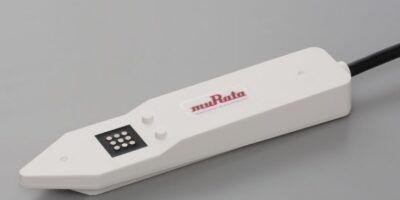Soil sensor increases crop yield; minimises environmental damage
Incorporating three sensors in one package, a soil sensor from Murata is intended for the agricultural and horticultural industries. The sensor enables growers to increase the yield and quality of crops while experiencing lower costs associated with reduced water and fertiliser usage, explains Murata, citing these as the most important application areas for the sensor.
Murata has initiated projects using the soil sensor with partners all over the world. One example is a collaboration with Vietnam’s Can Tho University and a research project in the Mekong Delta, conducting field trials of a soil monitoring system to observe the condition of agricultural land in the delta.
Vietnam’s Mekong Delta region is subject to the salinity impact from the infiltration of seawater during the dry season as a result of a decline in the volumetric flow rate of the Mekong River, and the action of the tides under the impact of climate change driven by global warming. In addition to salt damage, the environment for agriculture has become harsher due to the increasing severity of droughts and floods.
Murata developed a compact 130mm sensor to measure the condition of agricultural land and to channel water with high precision. Using independently-developed monitoring tools environmental conditions were visualised and analysed with a view to making improvements. The sensor contributed to the implementation of IT in agriculture in the Mekong Delta region by preventing salt damage to rice paddies and orchards, ameliorating salt and sulphur contamination of agricultural land and water channels, and creating a mechanism to comprehensively manage fertilisers, crops and irrigation systems.
The sensor monitors two types of electrical conductivity (EC), temperature and the moisture content of the soil. EC level data enable growers to realise fertiliser timing, and water content of the soil for timely watering.
The sensor operates from a 3.0 to 6.5V, 50mA (maximum) supply and has an EC measurement range of 0 to 5.0dS/m with an accuracy of ± three per cent full scale. Its moisture measurement range is 0 to 60 per cent VWC at an accuracy of ± three per cent full scale, and its temperature range is -20 to 70 degrees C with an accuracy of ± one degree C.
The sensor was protected to IP68 dust and water resistance including reliable rust proofing for use in harsh environments. Interface options are UART, RS232E, RS485 and SDI-12 and maximum cable length is specified as 3m at UART, 10m at RS232E and 300m at RS485.
In the project, the wireless transmitter receiver system used consisted of a gateway, a router and several sensor nodes. Each sensor node is made up of a transmitter and three sensor units to measure the soil, field and channel water quality, and the sensing data is accumulated in the cloud. The sensor provides high-precision analysis of conditions by using a shaped sensor element and a proprietary algorithm. It is able to run for over a year of continuous operation on three size AA batteries.




